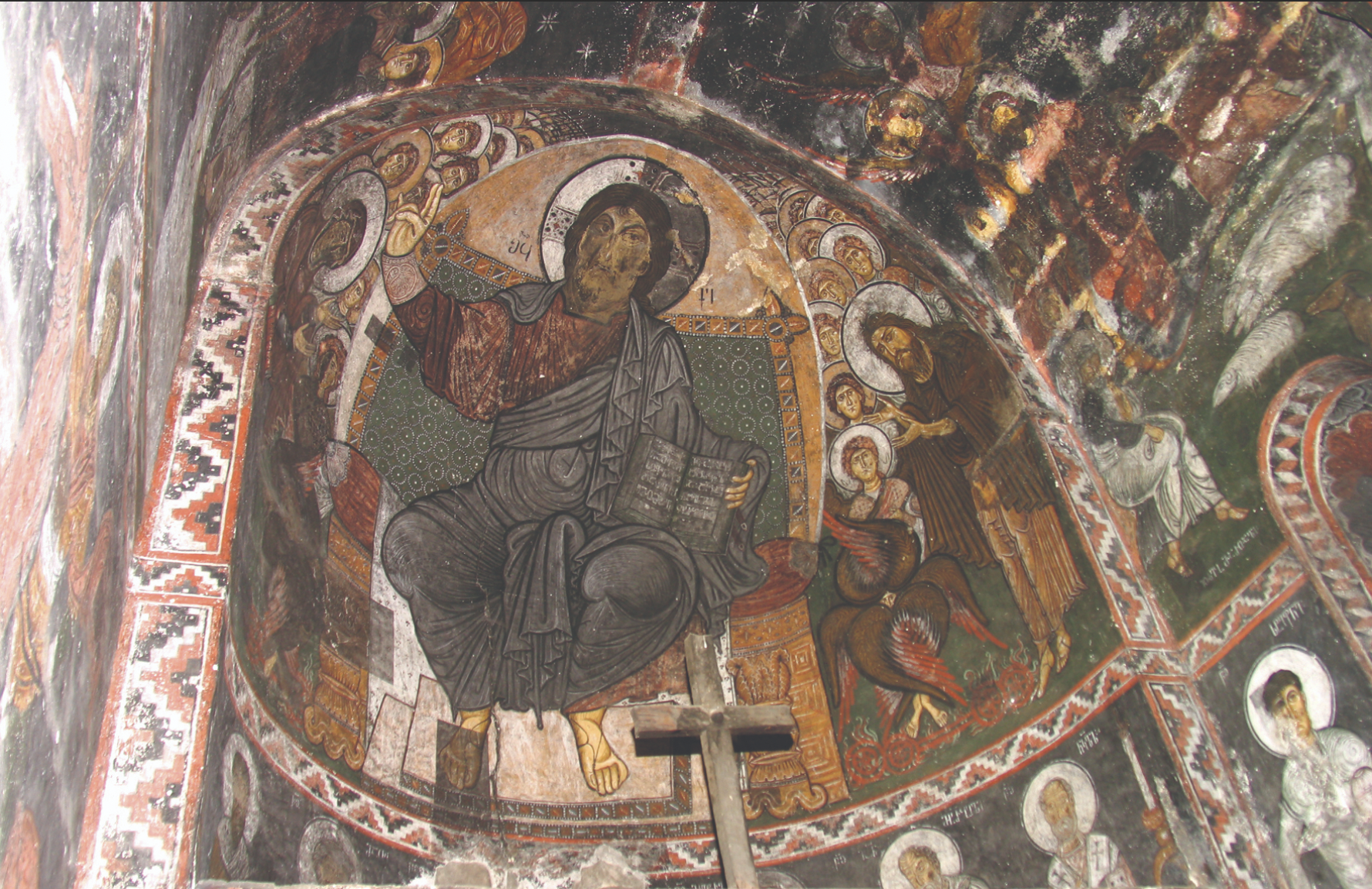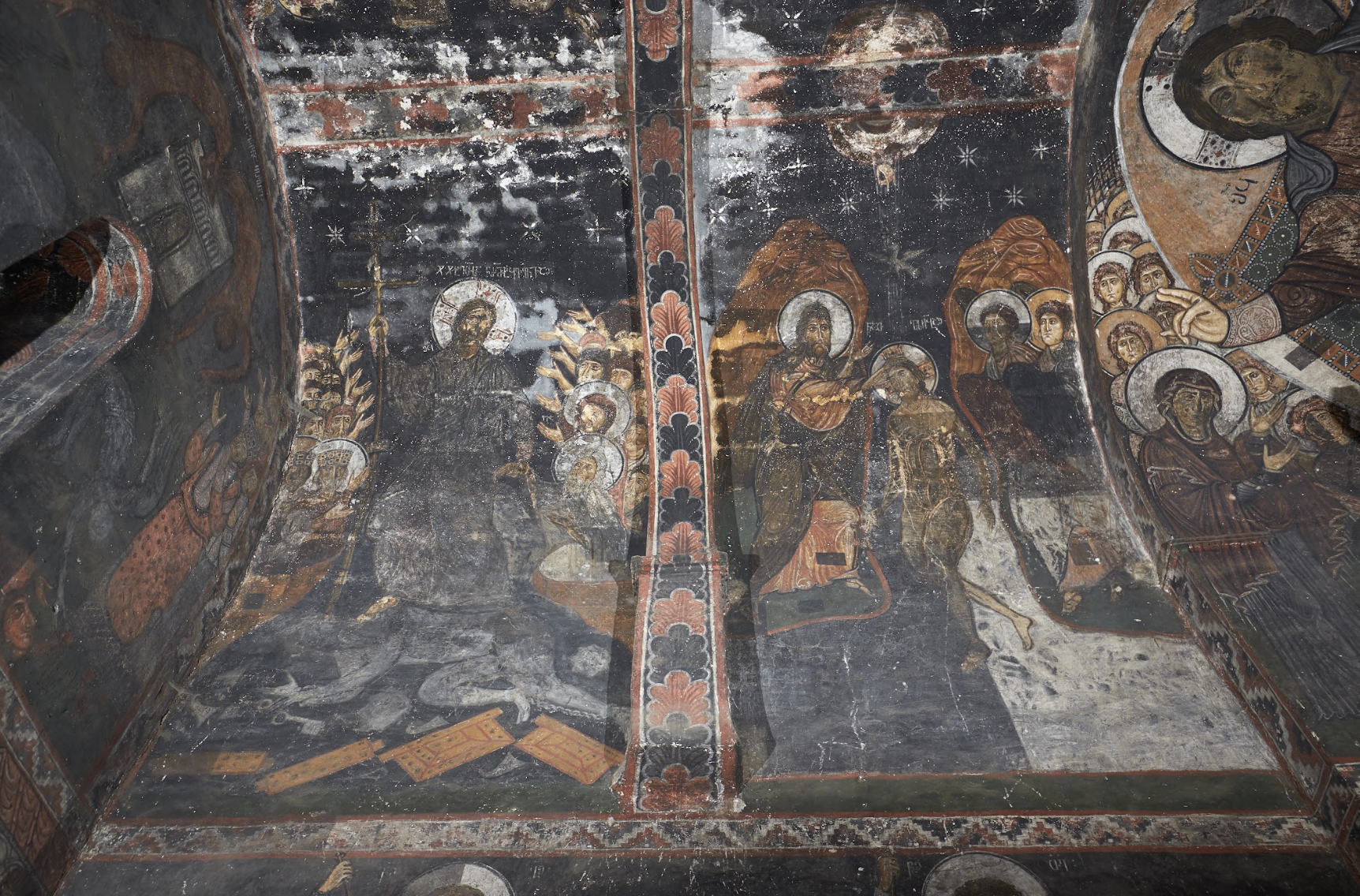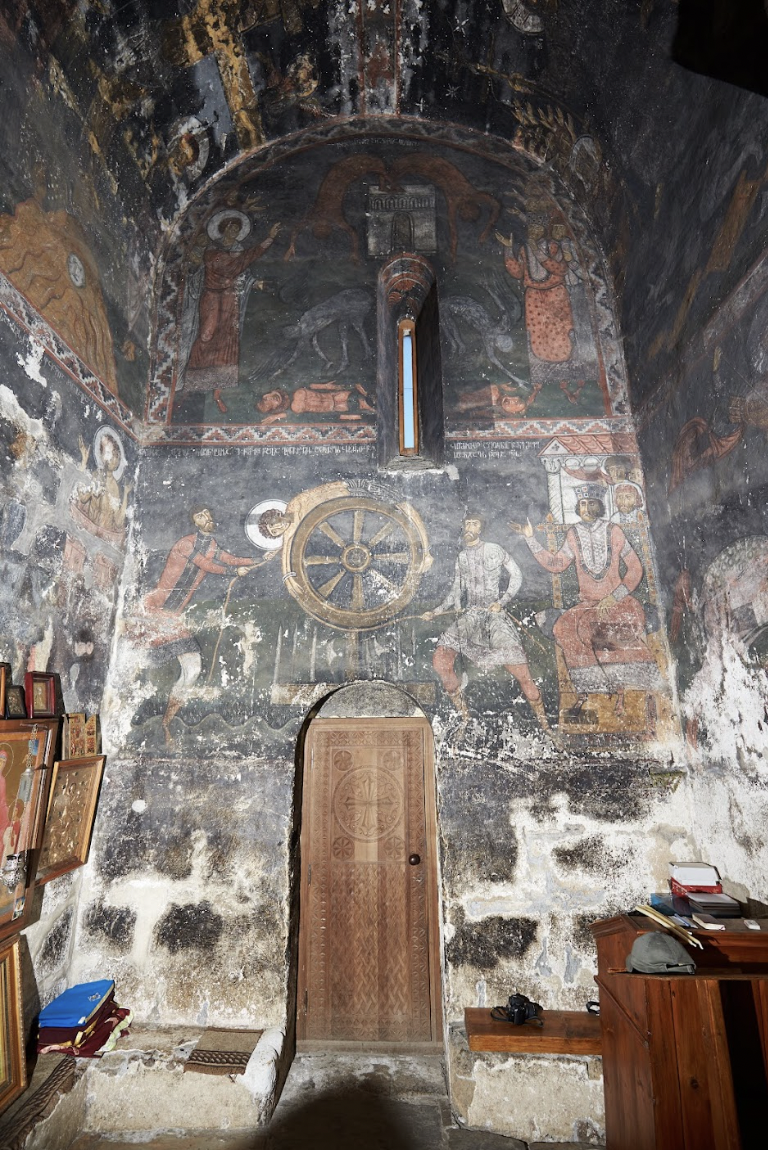
Feel free to add tags, names, dates or anything you are looking for


The Church of St. George is situated in Nakipari village in the mountainous region of Upper Svaneti. It is the third church with wall paintings (1130) that were signed by the King’s painter Tevdore. Earlier, Tevdore had painted the Church of the Archangels at Iprari and Lagurka (St. Cyricus and Julitta Church) Church in Kala (both of which are also located in Svaneti) in 1096 and 1112 respectively. All three wall paintings are accompanied with inscriptions written in ancient Georgian uncial script (asomtavruli) and refer to the commissioners – the ‘Aznaurs of Khevi’ (feudals of the valley), the exact date that the murals were painted, and the name and title of the painter. Similar to the inscription at Iprari Church, the text in Nakipari is inscribed on the cornice of the masonry chancel barrier.
The Church of St. George at Nakipari was built in the 10th century. It is a single-nave structure with an apse to the east and annexes (the north annex is now destroyed).

Nakipari. Church of St. George
Soon after its erection, the church was adorned with paintings inside as well as on the outside. Traces of the 10th century murals are visible on the chancel barrier and on the eastern facade of the church. The east facade is especially remarkable since it combines both sculptural and painted decorations.

Nakipari. Church of St. George. East facade
Both the style and program of the wall paintings at Nakipari Church have much in common with the murals at Iprari and Lagurka Churches. Tevdore once more presented here an abbreviated Christological cycle (the Nativity, the Baptism, the Crucifixion and the Anastasis on the vault) and emphasized the importance of the church’s patron saint by depicting the life-cycle of St. George.

Nakipari. Baptism and Anastais

Nakipari. John the Baptist. Detail
Since Nakipari Church is relatively large in comparison with Iprari and Lagurka Churches, the conch of the apse bears a more developed iconographic version – the ‘visionary’ type of Deesis, with the enthroned Christ flanked by the Virgin, St. John the Baptist, the Angels, a tetramorph and seraphim – while the Iprari and Lagurka murals bear the triadic Deesis represented using half-length figures.

Christ. Detail from the Deesis

The monumental and expressive image of Christ in the conch dominates the overall decoration, and attracts a viewer’s eye immediately upon entry into the church.

View to the east
In addition to the dedicatory inscription, the chancel barrier also features images of individual saints (St. Demetrios, St. Cyricus, and two Stylites).
The life-cycle of Saint George is represented through five scenes: St. George Destroying the Idols and the Martyrdom of St. George on the Wheel are depicted on the west wall.

The west wall

St. George in the Lime Pit, St. George Tortured with Iron Nails, and the Beheading of St. George are shown in the lower zone of the south wall.

The south wall
Most remarkable among the scenes is a heraldic composition of the mounted St. George slaying Diocletian and St. Theodore slaying the dragon. They are located on the lower zone of the north wall, close to the viewer. The monumentality of the artwork, combined with the coloring and visual appearance of the saints create a strong impression.

St. George and St. Theodore
The wall paintings at Nakipari Church show that the ‘King’s’ painter Tevdore remained loyal to his artistic principles. Much like the murals at Iprari and Lagurka, they are distinguished for their monumentality, the characteristic facial types, and the sheer expressiveness of the images. However, the murals at Nakipari Church reveal a tendency toward a more dynamic and decorative manner of execution, as well as increased emotional expressiveness.
Photos by Zura Tsertsvadze